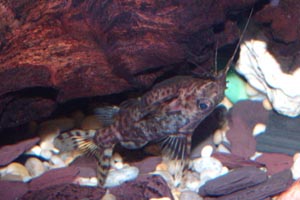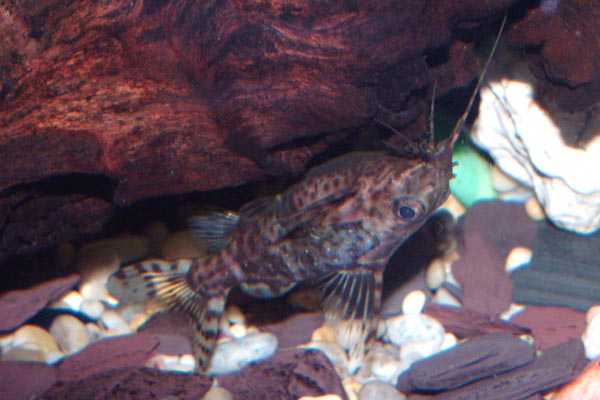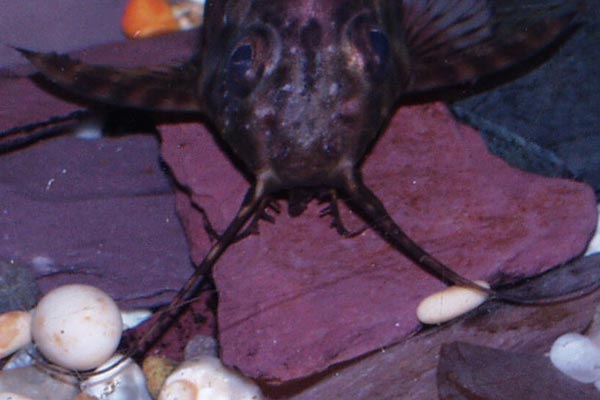

Species Profile | Images | Breeding Report | Similar Species

(Other members of the genus Synodontis)
ADULT SIZE: 10 cm
WATER CONDITIONS: Not critical
TEMPERATURE RANGE: 23-27 C
FOOD: Feed Synodontis nigriventris live and dried foods
DISTRIBUTION: This species comes from Congo (DRC)
AQUARIUM CARE: This small catfish is an ideal community species; peaceful with its tankmates and a pleasure to watch. Its upside down behaviour is quite interesting to watch as it swims from perch to perch where its rests under leaves, wood and roots, only righting itself to feed on the tank substrate.
BREEDING: Breeding requires specific conditions that are not clearly understood. This fish has been bred accidently, and it would seem to require a water change, with soft cool water to inititate spawning.
Have you bred Synodontis nigriventris? Why not fill in a breeding questionaire?, or examine existing Synodontis nigriventris breeding reports
Other members of the genus Synodontis
Other catfish species
Other species from Congo (DRC)

The upside down catfish in its familiar upside down swimming position

Like all Synodontis, this one has 3 sets of barbels
BREEDING: Breeding requires specific conditions that are not clearly understood. This fish has been bred accidently, and it would seem to require a water change, with soft cool water to inititate spawning.
Have you bred Synodontis nigriventris? Why not fill in a breeding questionaire?
This page summarises breeding reports provided by visitors to this site, along with some statistical analysis. Please feel free to contribute - whatever your experience!
| |||||||||
|
| ||||||||
|
| ||||||||
|
| ||||||||
|
| ||||||||
Remember, each record represents only one persons experience; if you had different results, or used different methods, please share your experiences
| Water conditions: Very soft and acidic | Water temperature: 24-27oC |
| Disposition: Active, but not aggresive | Community tank?: Yes, a good community fish |
| Spawning Method: Long term (fry appear with adults) | Breeding problems: Poor fry survival rate |
| Sex ratio: Somewhat female heavy | Breeding difficulty: Difficult |
| Sucess: Fairly sucessful | Years Experience: 4 |
| Other Comments: Easy to keep but hard to trigger spawns reliably, small egg counts and poor hatch rate. | |
| Date this record created: 16th May 2012 | Breeding date: 2012 |
| Breeder: | Location: australia |